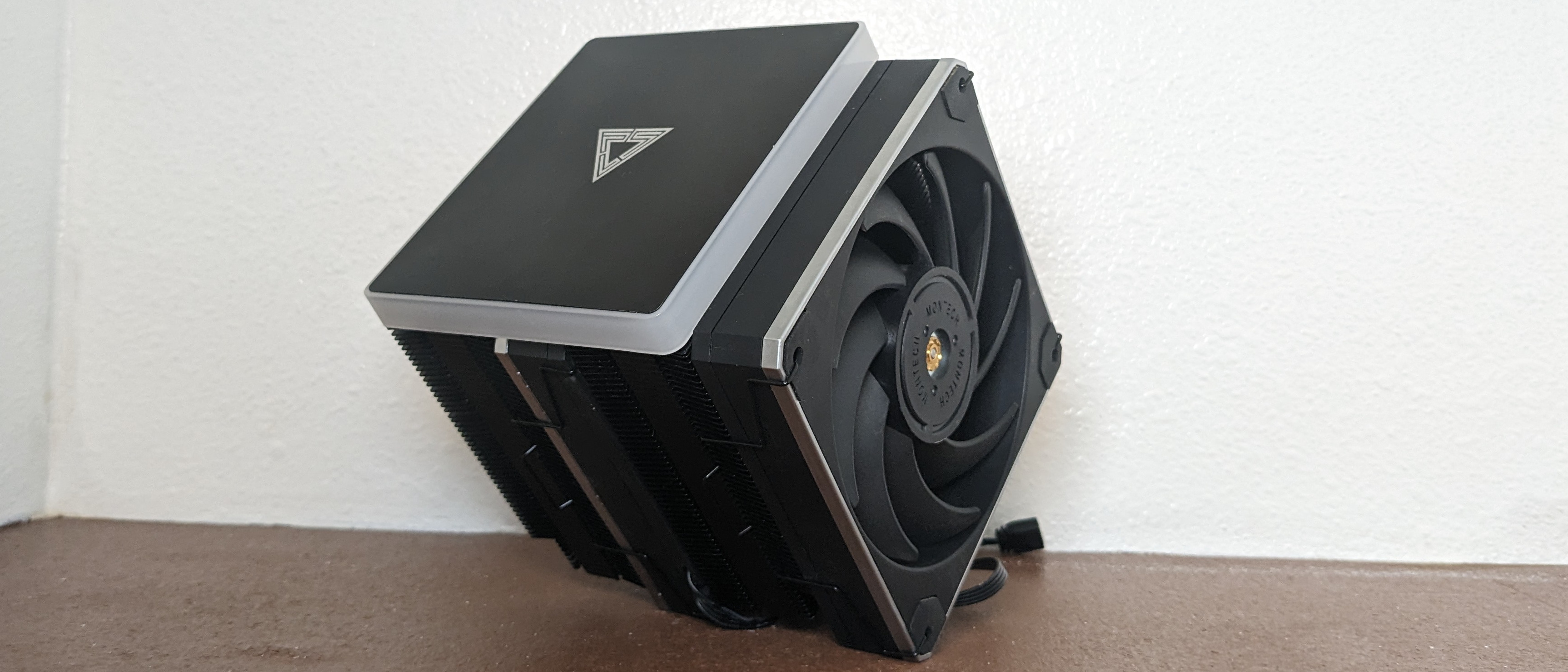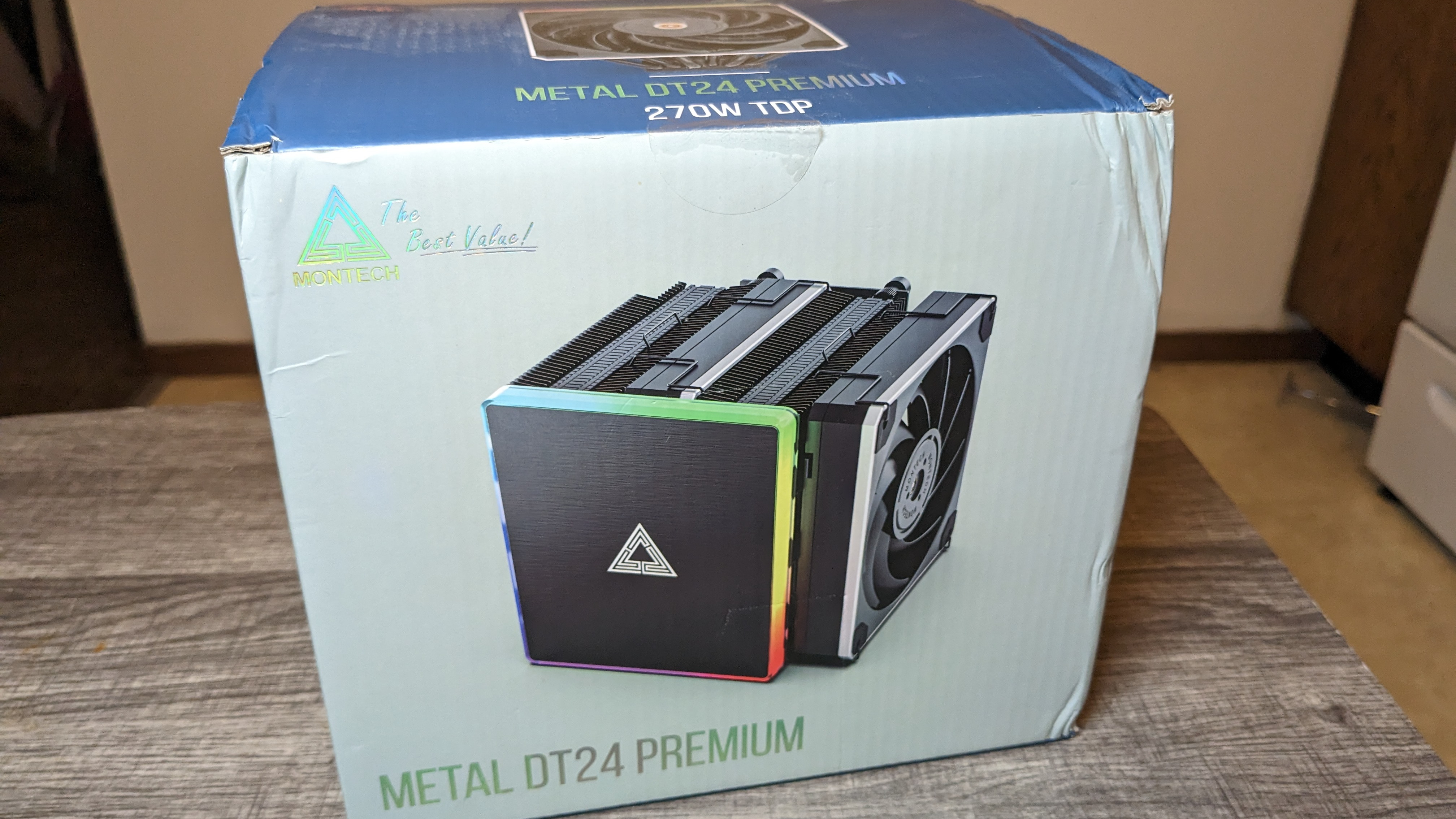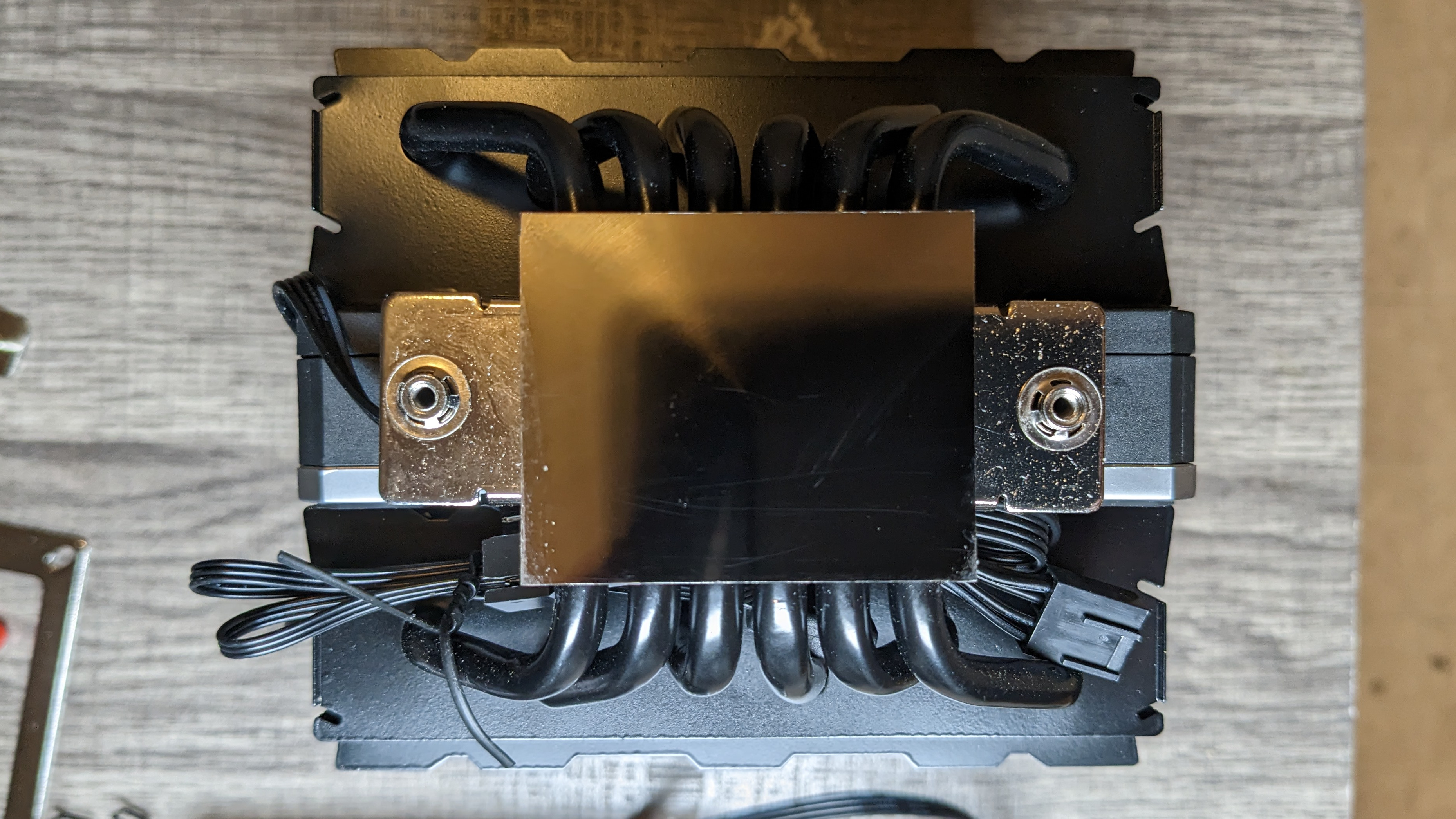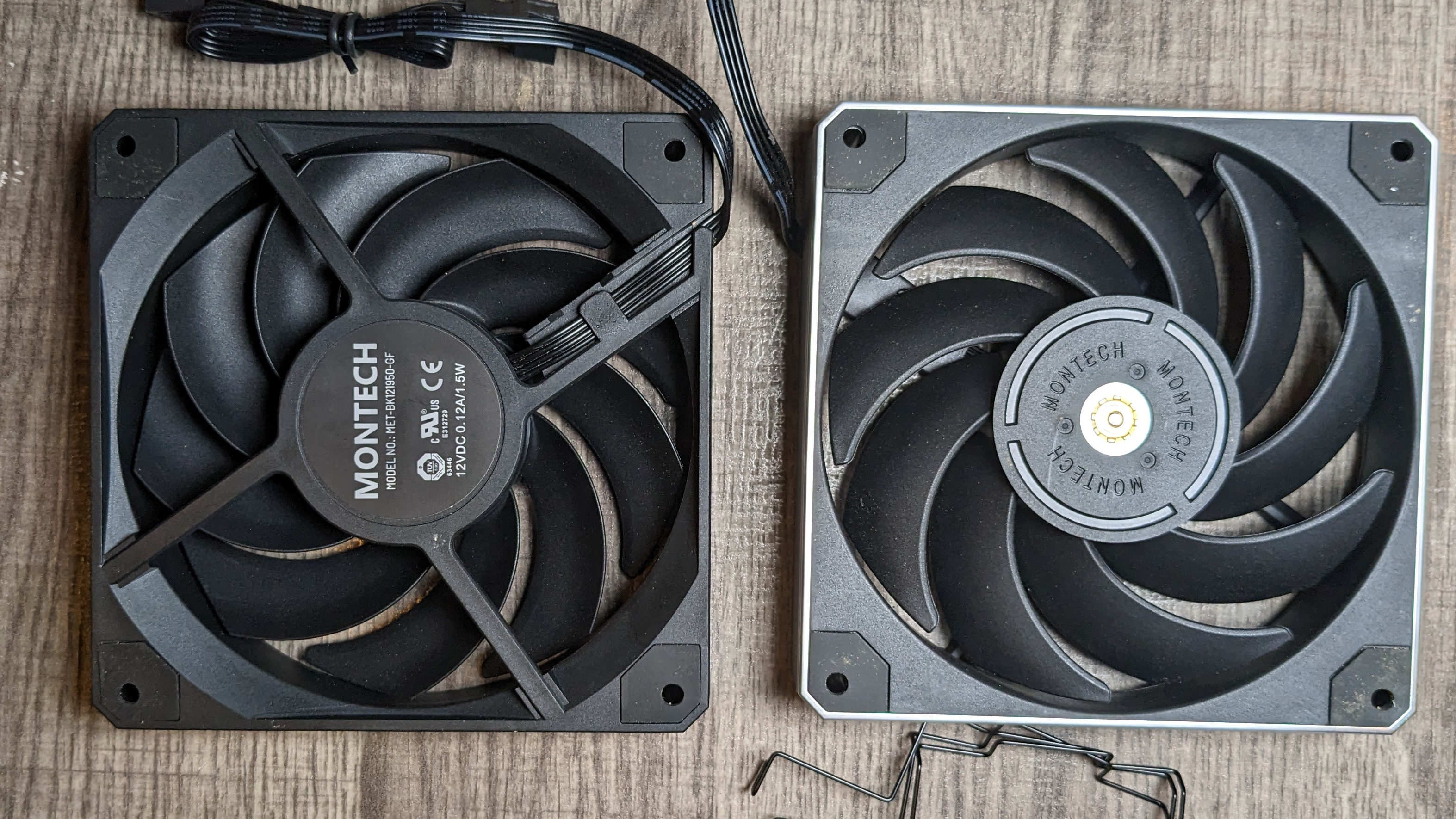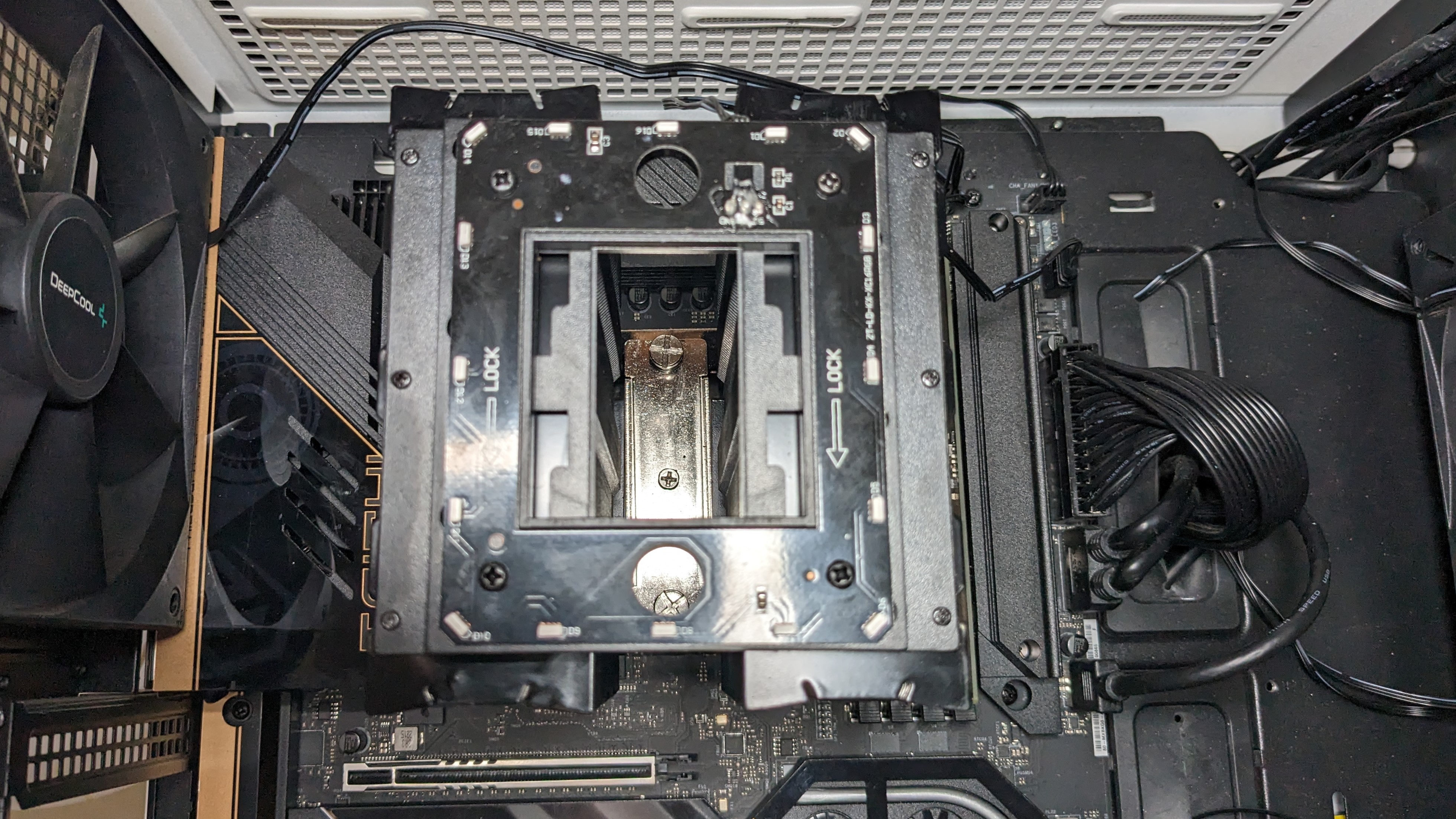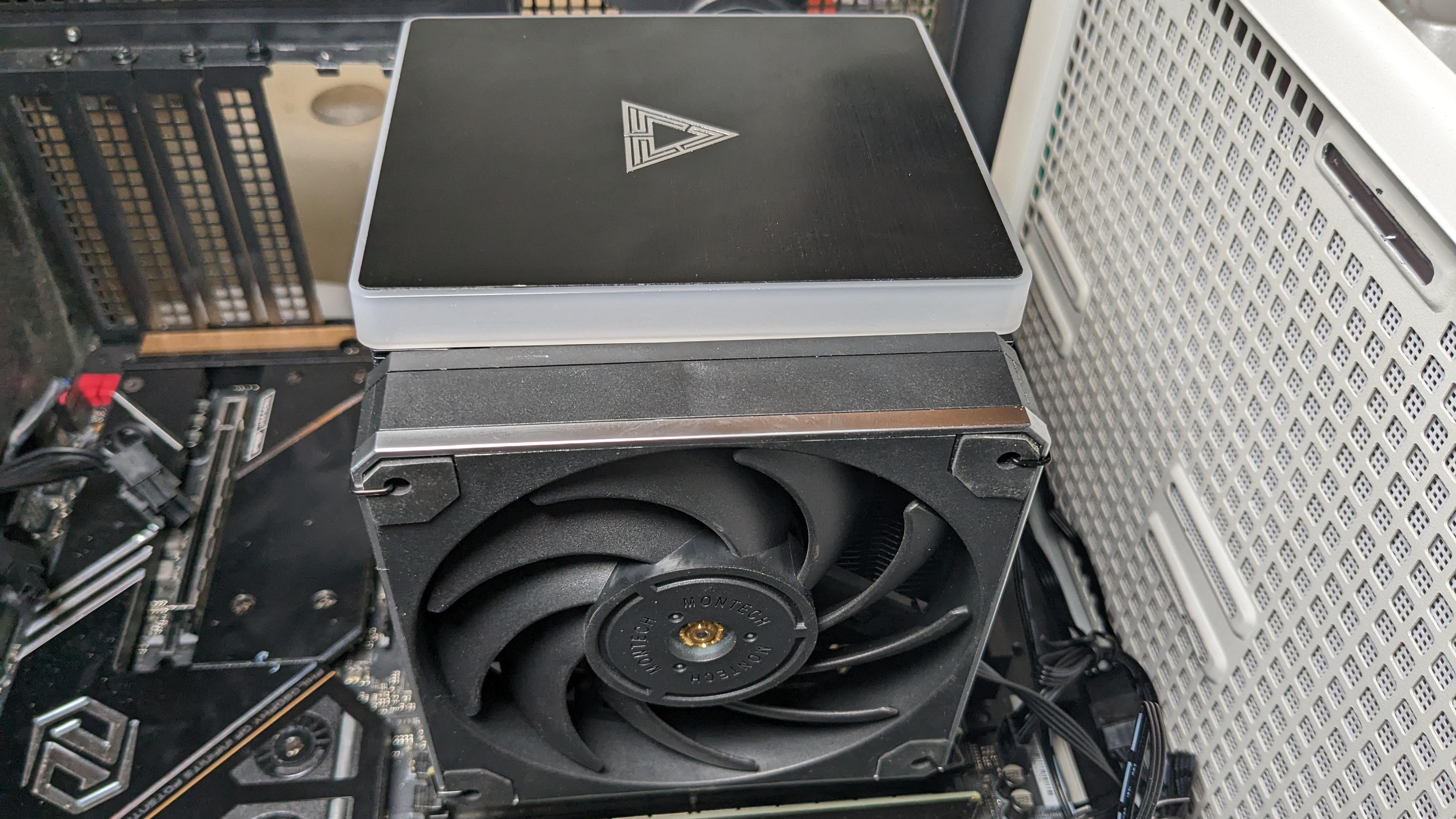Tom's Hardware Verdict
Montech’s Metal DT24 Premium performs especially well with AMD’s Ryzen 7700X, matching the best results we have with tested air coolers. However, it doesn’t perform as well with Intel Raptor Lake CPUs.
Pros
- +
Subtle ARGB
- +
Strong performance on AMD Ryzen 7700X
Cons
- -
Doesn’t perform as well with Intel CPUs
- -
Fans only rated for 40,000 hours
Why you can trust Tom's Hardware
Montech PC, based out of Taiwan, is a relatively new company, arriving in 2016. However, there’s no lack of experience, as Montech’s parent brand, Telon, has been active in the industry for nearly thirty years. Montech’s current lineup includes keyboards, power supply, cases, fans, and CPU coolers. Today we’ll be looking at the Metal DT24 Premium, a dual tower air cooler which retails for $69.
Cooler Specifications
| Cooler | Montech Metal DT24 |
| MSRP | $69.00 USD for Premium version with ARGB cover |
| $57.00 USD for base version without ARGB | |
| Installed Size | 133.6 (L) x 124 (W) x 158 mm (H) |
| Heatsink Material | Aluminum |
| Heatpipes | 7x 6mm Copper Heatpipes |
| Socket Compatibility | Intel: LGA1700, LGA1200, LGA1151, LGA1150, LGA1155, LGA2066, LGA 2001, LGA2011-v3 |
| AMD: AM5 & AM4 | |
| Base | Precision-Machined Convex Copper Base |
| Max TDP (Our Testing) | 214W on Intel i7-13700K |
Packing and Included Contents
Montech’s Metal DT24 Premium arrives in a mid-size box that’s slightly larger than other coolers of it’s class.
The inner contents are protected by molded foam and cardboard, ensuring the cooler arrives undamaged, even if the postal couriers don’t handle the box with care – like our sample pictured above.

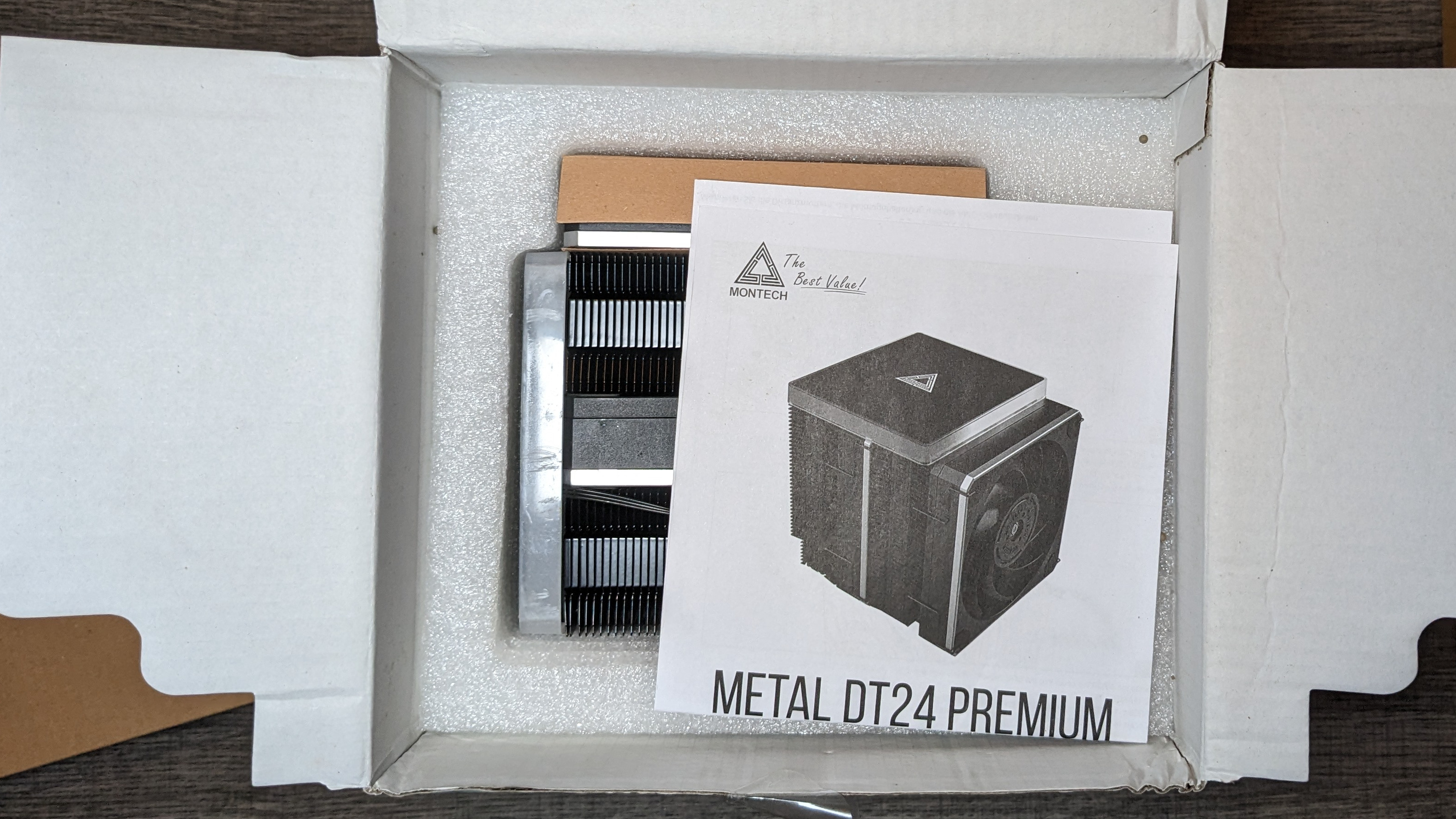
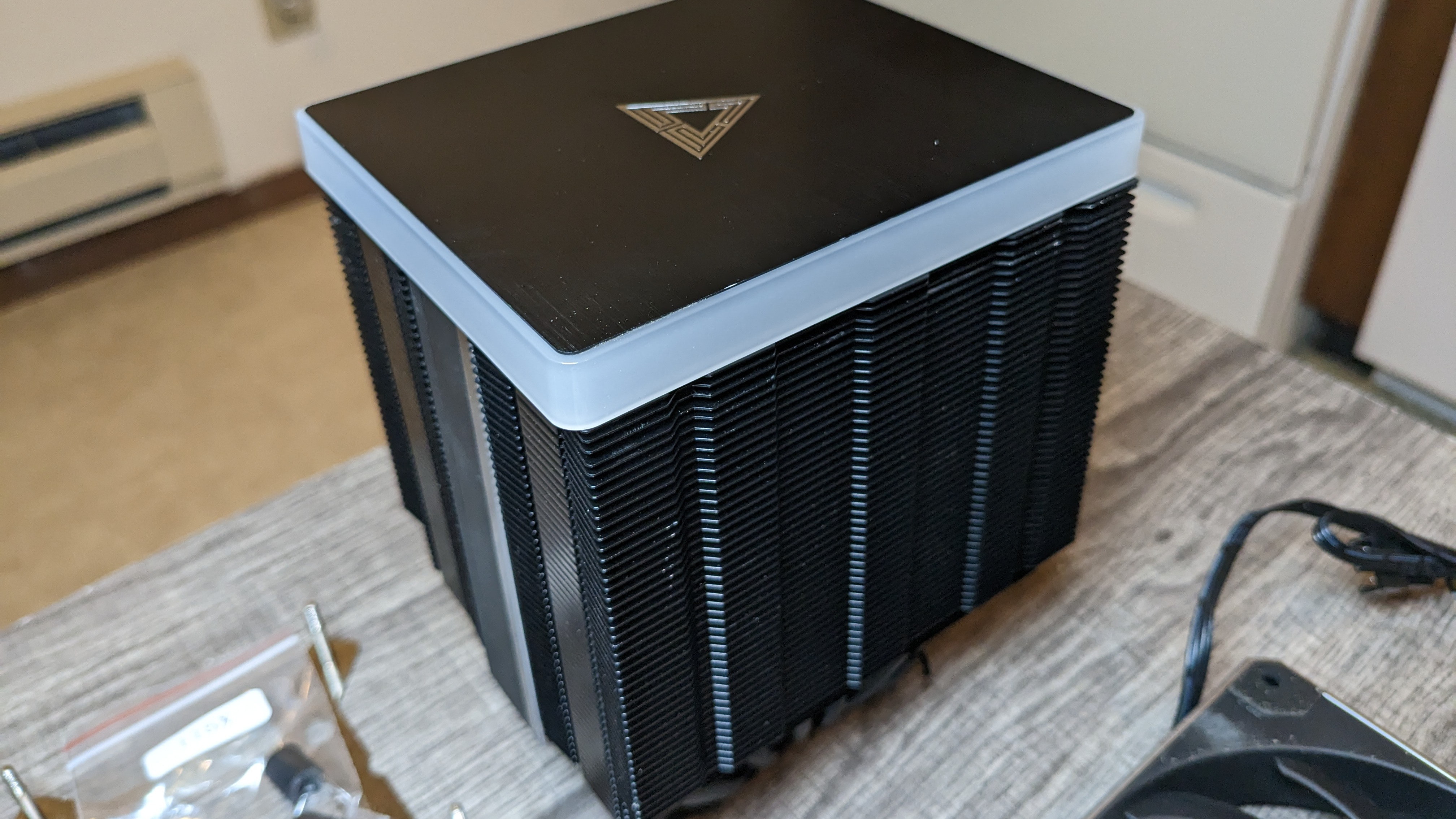
Included with the package are the following:
- Dual Tower Heatsink with ARGB cover
- Two 120mm Metal PWM fans
- Fan Clips
- Mounts for all modern CPU sockets (including AM5 & LGA1700)
- Thermal Paste
- Installation Guide
Features of Montech’s DT24 Metal Premium
Unique subtle RGB design
Most coolers that feature RGB include it on both the body of the cooler and on the fans, and it’s generally rather flashy – reminiscent of a rave. Montech took a calmer approach with the Metal DT24 Premium. Only the top edges of the cooler are illuminated, and by default it slowly cycles through colors for more subtle RBB effect.
44mm RAM compatibility
Get Tom's Hardware's best news and in-depth reviews, straight to your inbox.
The Montech Metal DT24 Premium should work with most RAM kits on the market. While I was able to use it on my system with 45mm RAM, the fit was tight and I’d recommend sticking to RAM that is 44mm or shorter.
Dual Tower Design with Six Copper Heatpipes
Montech’s Metal DT24 features a traditional dual-tower design, with six copper heatpipes and a unique fin design which includes a total heat dissipation surface area of over 8553 cm squared. That’s Montech’s claim anyway. We didn’t have a high-resolution laser scanner handy to verify that number.
Two 120mm Metal 120 PWM fans
There’s more to a cooler than just the heatsink or radiator. The bundled fans have a significant impact on cooling and noise levels. Montech’s Metal DT24 Premium includes two of Montech’s latest Metal 120 PWM fans.
Montech advertises that these fans have custom-made metal shells and bearings, with a unique airfoil design for maximum airflow. The fans include anti-vibration pads on both sides and undergo two rounds of dynamic balancing tests before shipping, to reduce vibrations and ensure low noise levels.
The Metal 120 PWM fans are powered by a new industrial-grade 6-pole motor, which has lower power consumption compared to previous-generation products. Montech advertises that the new “High-end” Hydraulic Bearing Fans enable a “long life” of 40,000 hours, and it backs that with a three-year warranty. That might sound impressive, but many competitors’ fans are rated for 100,000 -150,000 hours and are paired with warranties generally lasting five or more years.
| Model | Metal 120 PWM |
| Dimensions | 120 x 120 x 25 mm |
| Fan Speed | 800~1950RPM ± 10% |
| Air Flow | 69 CFM (Max) |
| Air Pressure | 2.82mm H₂O |
| Bearing Type | Hydro Dynamic Bearing (HDB) |
| Motor | 6-pole fan motor |
| Lifespan | 40,000 |
Installation on LGA1700 and AMD AM4 AM5
Montech mentions that a user-friendly installation was one of their goals with the Metal DT24 Premium. They’ve incorporated all-metal designs instead of using plastic brackets to ensure a durable product with a long lifespan.
1. If you’re running an AMD Ryzen system, you’ll need to start by removing the default retention bracket. Intel users will need to apply the backplate to the motherboard.
2. AMD users will need to secure the mounting studs on top of the standoffs. Intel users will slide standoffs on top of the backplate’s studs.
3. Place the mounting bars on top of the standoffs, and secure them with the included thumbscrews.
4. Slide the heatsink on top of the mounting bracket and secure it using a screwdriver.
5. Attach the fans to the heatsink via the included clips, and then connect them to the motherboard’s PWM controller.
6. Slide the cover over the top of the unit and connect the ARGB header.
Cooling Context
Modern CPUs, whether Intel or AMD, are difficult to cool in intensive workloads. In the past reaching 95C+ on a desktop CPU might have been a cause for concern – but with today’s high-end processors, it is considered normal operation. Similar behavior has been present in laptops for years due to cooling limitations in tight spaces.
Since last fall, Tom’s Hardware has brought you cooling reviews using one of the most power-hungry desktop CPUs on the market – Intel’s flagship i9-13900K. To give you an idea of what it takes to cool Intel’s behemoth, we’ve tested it with a variety of coolers from basic low-end air coolers like the Amazon Basics CPU cooler to high-end 420mm AIOs such as Corsair’s iCUE H170i Elite.
While it’s nice to see how Intel’s flagship responds to different levels of cooling, those results don’t always correlate with lower-tier CPUs. Today’s review features two CPUs more commonly purchased by end users: AMD’s Ryzen 7 7700X and Intel’s Core i7-13700K.
LGA1700 Socket Bending
Note there are many factors other than the CPU cooler that can influence your cooling performance, including the case you use and the fans installed in it. A system's motherboard can also influence this, especially if it suffers from bending, which results in poor cooler contact with the CPU.
In order to prevent bending from impacting our cooling results, we’ve installed Thermalright’s LGA 1700 contact frame into our testing rig. If your motherboard is affected by bending, your thermal results will be worse than those shown below. Not all motherboards are affected equally by this issue. I tested Raptor Lake CPUs in two motherboards. And while one of them showed significant thermal improvements after installing Thermalright’s LGA1700 contact frame, the other motherboard showed no difference in temperatures whatsoever! Check out our review of the contact frame for more information.
Testing Methodology
All testing is performed at a 23C ambient room temperature. Multiple thermal tests are run on each CPU to test the cooler in a variety of conditions, and acoustic measurements are taken with each result. These tests include:
1. Noise normalized testing at low noise levels
2. “Out-of-the-box”/default configuration thermal & acoustics testing.
a.) This means no power limits on Intel’s i7-13700K, and AMD’s default power limits on AMD’s Ryzen 7 7700X.
b.) Because CPUs hit Tjmax in this scenario, the best way to compare cooling strength is by recording the total CPU package power consumption.
3. Thermal & acoustics testing in power-limited scenarios.
a.) With Ryzen 7 7700X, I’ve tested with limits of 95W and 75W enforced.
b.) On Intel’s i7-13700K, I’ve tested with limits of 175W and 125W enforced.
The thermal results included are for 10-minute testing runs. To be sure that was sufficiently long to tax the cooler, we tested both Thermalright’s Assassin X 120 R SE and DeepCool’s LT720 with a 30-minute Cinebench test with Intel’s i9-13900K for both 10 minutes and 30 minutes. The results didn’t change much at all with the longer test: The average clock speeds maintained dropped by 29 MHz on DeepCool’s LT720 and 31 MHz on Thermalright’s Assassin X 120 R SE. That’s an incredibly small 0.6% difference in clock speeds maintained, a margin of error difference that tells us that the 10-minute tests are indeed long enough to properly test the coolers.
Testing Configuration – Intel LGA1700 Platform
| CPU | Intel Core i7-13700K |
| Coolers Tested | BeQuiet! Dark Rock Pro 4 |
| Cooler Master Master Air MA824 Stealth | |
| Cooler Master Hyper 622 Halo | |
| Cooler Master Master Liquid Core 360L | |
| Cougar Forza 85 Essential | |
| DeepCool Assassin IV | |
| DeepCool LT720 | |
| Jiushark JF13K Diamond | |
| Thermalright Silver Soul 135 | |
| Thermalright Peerless Assassin | |
| Montech D24 Premium | |
| MSI CoreLiquid MEG S360 | |
| Noctua NH-D15S | |
| Motherboard | MSI Z690 A Pro DDR4 |
| GPU | Intel ARC A770 LE |
| Case | Be Quiet! Silent Base 802, system fans set to speed 1 setting. |
| Monitor | LG 45GR95QE |
| PSU | Cooler Master XG Plus 850 Platinum PSU |
Testing Configuration – AMD AM5 Platform
| CPU | AMD Ryzen 7 7700X |
| Air Coolers Tested | BeQuiet! Dark Rock Pro 4 |
| Cooler Master Master Air MA824 Stealth | |
| Cooler Master Hyper 622 Halo | |
| Cougar Forza 85 Essential | |
| DeepCool Assassin IV | |
| Jiushark JF13K Diamond | |
| Thermalright Silver Soul 135 | |
| Thermalright Peerless Assassin | |
| Montech D24 Premium | |
| Noctua NH-D15S | |
| Motherboard | ASRock B650E Taichi |
| GPU | Intel ARC A770 LE |
| Case | DeepCool CK560WH |
| Monitor | LG 45GR95QE |
| PSU | DeepCool PQ1000M |

Albert Thomas is a contributor for Tom’s Hardware, primarily covering CPU cooling reviews.
